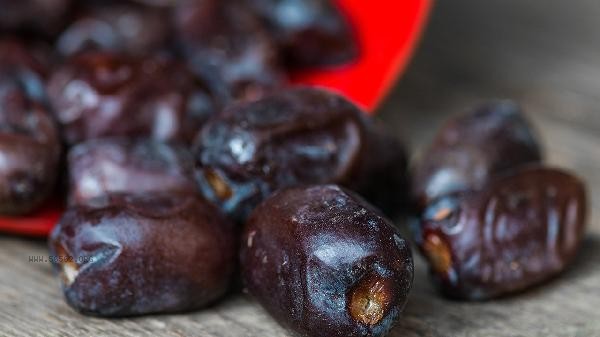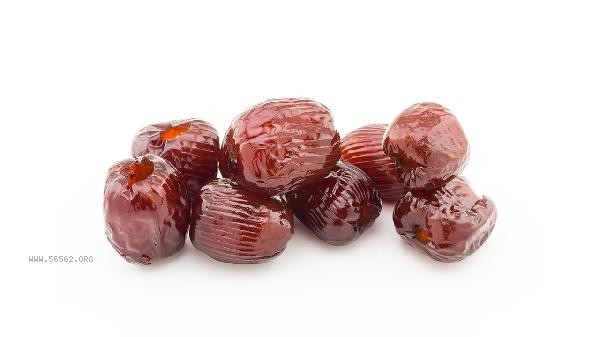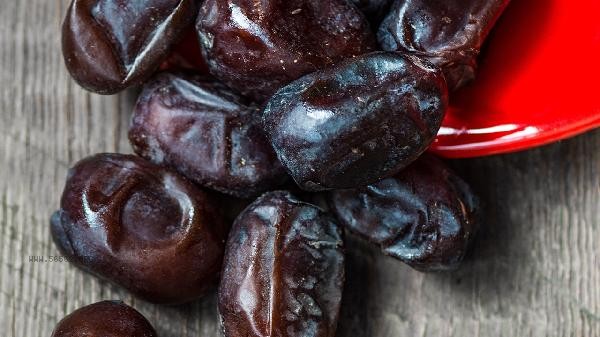Making honey dates at home requires steps such as selecting dates, cleaning, removing seeds, sugar boiling, and drying. The main methods include traditional sugar soaking, rapid sugar boiling, oven drying, sun drying, and vacuum packaging.

1. Traditional Sugar Staining Method
Choose thick fleshy red or green dates, soak and wash them in clean water, and then drain them. Use a seeder to vertically penetrate the jujube pit and maintain the integrity of the fruit flesh. Add white sugar and dates to the pot in a 1:1 ratio, and simmer over low heat until the syrup becomes viscous. The penetration of sugar solution requires repeated flipping to avoid sticking the bottom, and the cooking time is about 40 minutes. The cooked honey dates need to be spread out on a bamboo sieve and dried in the shade. The syrup crystallizes to form a transparent sugar coating. The finished product of this method has a bright red color, but attention should be paid to drying it in a cool and ventilated place to avoid mold growth.
2. Rapid sugar boiling method
will scratch the cleaned and pitted fresh jujubes to help sugar penetrate. Mix rock sugar and maltose in a 2:1 ratio, add water and boil until the syrup reaches 115 degrees. Pour the processed dates into the pot and cook over high heat for 10 minutes. Turn off the heat and soak for 6 hours to allow the sugar to be fully absorbed. After removing it, use kitchen paper to absorb the surface sugar solution and place it on a baking tray lined with oil paper for later use. This method shortens the traditional process time and is suitable for fast home production, but it requires controlling the syrup concentration to prevent excessive sweetness.
3. Oven drying method
Spread the sugar boiled dates flat on the baking net and set the oven to a 60 degree hot air circulation mode. At the beginning, flip it every half an hour to prevent adhesion, and continue baking for 4-6 hours until the surface is dry. It can be adjusted to 90 degrees during the final stage of baking to coat the surface with sugar, but close observation is needed to avoid coking. This method is not affected by weather, and the finished product has a soft and sticky taste. Note that there may be temperature differences between different ovens. It is recommended to test the optimal temperature with a small amount of dates first.

4. Sun dried and wind dried
Jujubes soaked with sugar are placed on a bamboo sieve and covered with gauze to prevent dust. Choose continuous sunny weather, expose to direct sunlight during the day and retract at night, flipping 3-4 times a day. Under strong sunlight in summer, it takes about 3 days, and in autumn, it takes 5-7 days for the jujube body to shrink and harden. Natural sun dried honey dates have a sunny flavor, but it is necessary to prevent mosquito and insect pollution. In case of rainy weather, it is necessary to turn indoors and use a fan to assist in drying to avoid fermentation and deterioration.
Fifth, Vacuum Packaging Method
Dry the honey dates to 70% dryness and place them in a food grade vacuum bag. After vacuuming, seal and store them. This method can extend the shelf life to more than 6 months and is suitable for mass production. Before consumption, take out an appropriate amount and let it air dry to restore its taste. Vacuum packaging should ensure that the moisture content of honey dates is below 20%, otherwise it is prone to mold growth. Can be paired with deoxidizers to enhance storage effectiveness, but should be consumed as soon as possible after opening.

For homemade honey dates, it is recommended to choose fresh dates from the current season. When cooking with sugar, a small amount of osmanthus or tangerine peel can be added according to taste to enhance the fragrance. The completed jujube should be sealed and stored away from light, and regularly checked for moisture regain. Those with weak gastrointestinal function need to control the consumption, and diabetes patients are recommended to use sugar substitutes. All utensils during the production process must be strictly disinfected, and any fermentation odors should be immediately discarded. If you want to enhance nutritional value, you can add a small amount of vitamin C solution during sugar boiling to prevent oxidation and discoloration.








Comments (0)
Leave a Comment
No comments yet
Be the first to share your thoughts!